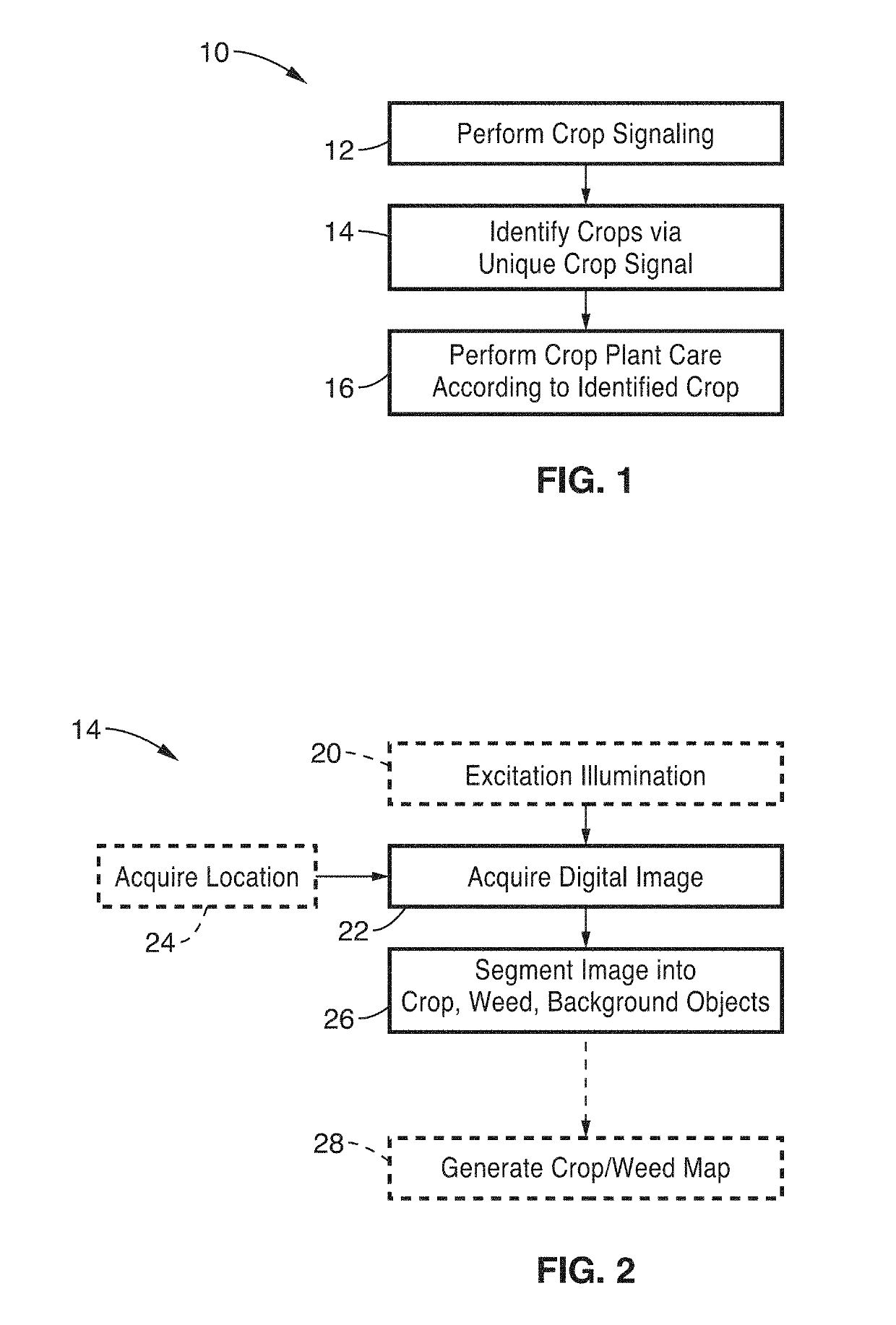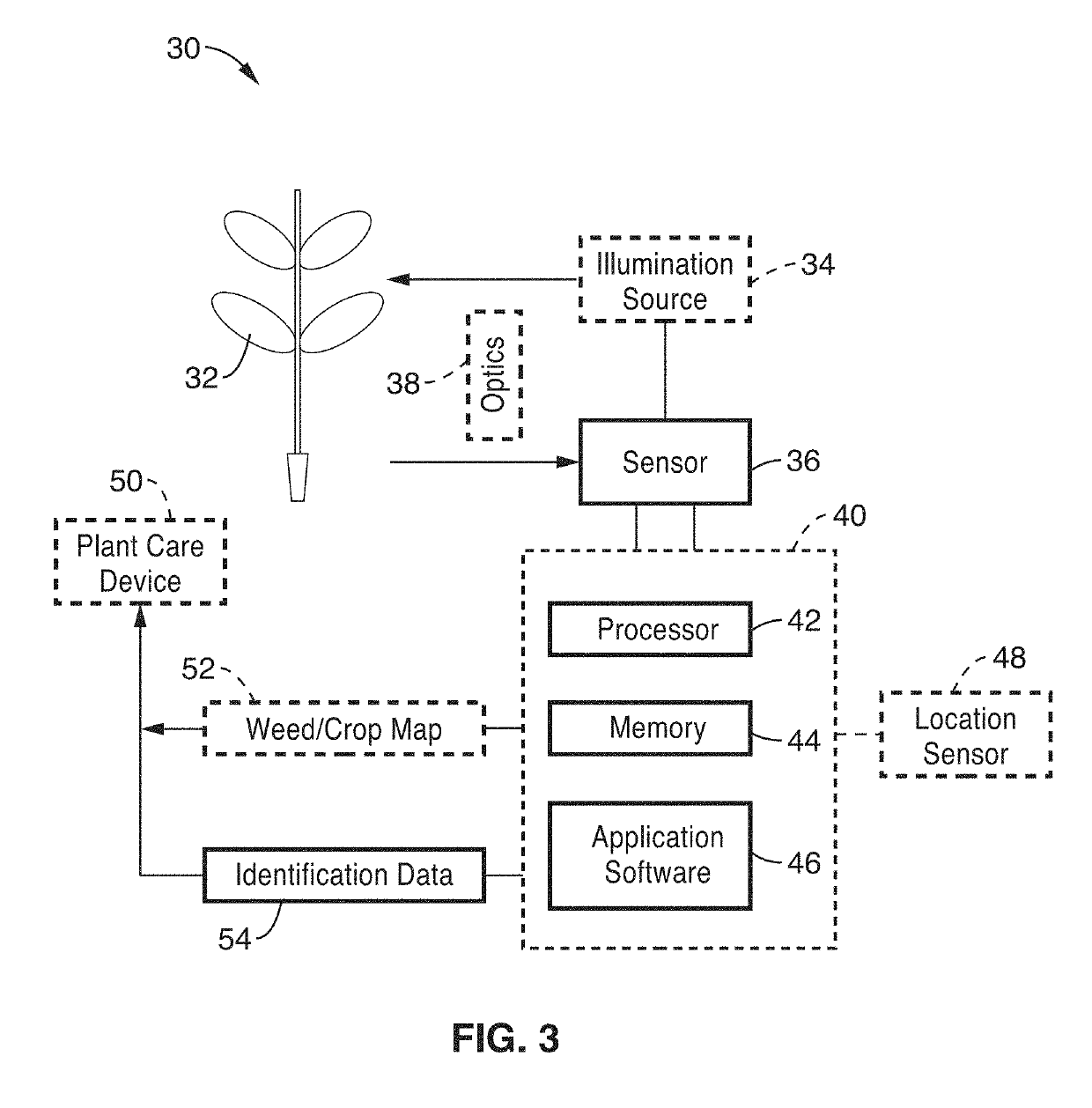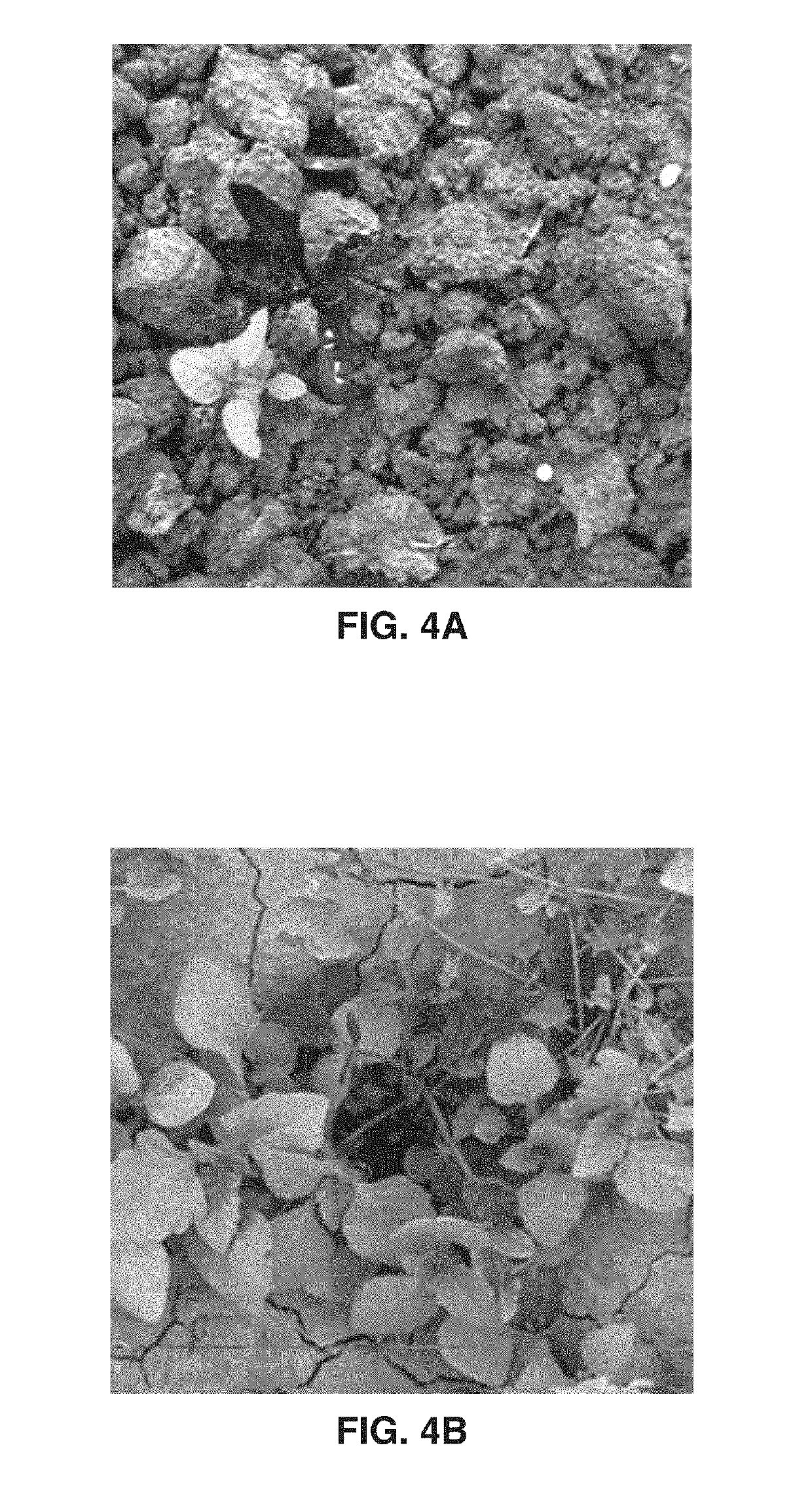Robotic plant care systems and methods
- Summary
- Abstract
- Description
- Claims
- Application Information
AI Technical Summary
Benefits of technology
Problems solved by technology
Method used
Image
Examples
Embodiment Construction
[0048]FIG. 1 is a high level flow diagram of an automated crop care process 10 using crop signaling for plant detection in accordance with the present description. First, at step 12, crop signaling compound is applied or otherwise administered to target crop plants prior to or at the time of planting, when the certainty of identity (crop vs. weed) is guaranteed. The crop signaling compound is configured to have a unique optical signature that greatly simplifies and ensures the success of a latter crop vs. weed detection task. Thus, crop identity is allocated through the presence of the applied crop signal for later use in automated weed management or automation of other individual plant care tasks.
[0049]Next, at step 14 when crop plant care is desired, machine sensing techniques are deployed to detect and locate, in real time, the unique optical crop signal carried by the crop plants, as well as all plants in proximity thereto (i.e. identification of both crop and weeds or other fol...
PUM
 Login to View More
Login to View More Abstract
Description
Claims
Application Information
 Login to View More
Login to View More - R&D
- Intellectual Property
- Life Sciences
- Materials
- Tech Scout
- Unparalleled Data Quality
- Higher Quality Content
- 60% Fewer Hallucinations
Browse by: Latest US Patents, China's latest patents, Technical Efficacy Thesaurus, Application Domain, Technology Topic, Popular Technical Reports.
© 2025 PatSnap. All rights reserved.Legal|Privacy policy|Modern Slavery Act Transparency Statement|Sitemap|About US| Contact US: help@patsnap.com



